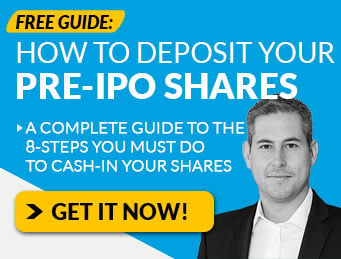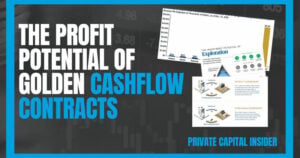As a somewhat lazy human, I’m always looking for “shortcuts” to get things done faster.
And as a professional marketer and salesman, I know that people are always interested in buying “secrets” that promise those shortcuts.
Especially if they are secrets about becoming richer that the ominous sounding “they” don’t want you to know.
And as an investor, getting access to the right information is – in many ways – the “key” to winning the game.
But we also have to be wary of the piles of bad information that is either wrong… or worse, counter intelligence designed to manipulate us into sub-optimal play (like bluffing in poker).
In order to decode the signal from the noise, every Player needs to learn something I like to call…
The Secret Language of Money
If you didn’t read Part 1 of the series, here’s a quick recap…
- Most unsuccessful investors live in a constant state of fear. They are afraid of money, they are afraid of taking risks, and they are afraid of losing.
- Successful investors, however, live in a constant state of confidence. They see investing as a winnable game and they have fun playing it.
- A game is a form of art in which Players gather (1) Information and make (2) Decisions in order to (3) Manage Resources… through the use of (4) Game Tokens… in the pursuit of a (5) Goal… in the face of (6) Opposition.
All six of these elements must be present in order for the game to function properly.
And perhaps the most critical element of any game is this: Players must make Decisions (which we’ll discuss in Part 3).
But in order to make Decisions, the Player must have some sort of Information in which to base those Decisions.
And this is where the problems begin for most novice investors.
Why? Because the majority of people are financially illiterate.
They don’t have a firm grasp on basic money management and investment principles.
And because they don’t have this basic Information about the game (or otherwise chose to ignore it)…
They are easily fooled by ridiculous “Get Rich Quick” claims that might be mathematically possible (i.e 10,000x gains)…
But the probability of it happening is so low, the Player might as well be buying lottery tickets.
However, if they understood the basics of The Secret Language of Money, they’d at least have a fighting chance of knowing what’s real and what isn’t.
It all starts with understanding the Information located on…
The 3 Core Financial Statements
If you want to be a Player, you need to have capital to invest with.
This means the single defining skill set you MUST develop is saving money!
Or, if we want to use a more business focused term, you must focus on increasing your monthly positive cash flow.
Let’s imagine for a moment you are running a business.
To increase positive cash flow, it means we need to make use of the Information found on three core documents…
- The Profit & Loss Statement (P&L): This document is a “snapshot in time” of your financial health (usually on a quarterly or annual basis).
In a nutshell, Revenue – Expenses = Profit… and this document displays all that information.
To increase your total Profit, you can increase revenue, decrease expenses, or both.
Generally speaking, it’s easier to increase revenue than it is to decrease expenses (you only have a finite amount of expenses to cut).
But just because you’re showing a profit or loss on paper doesn’t mean you have money in the bank.
That’s why we also need to look at…
- The Cash Flow Statement: This document shows – in detail – exactly where the cash is flowing… both in and out.
And if you want to know the secret to living wealthy, managing cash flow is key.
- The first section of the Cash Flow Statement describes your cash flows from operating activities (CFO).
Or put another way, how much money did you bring in from your main business activity (i.e. your job)…
And how much money went out to pay for expenses directly related to generating that income, known as operating expenses (or OpEx).
If we are pretending your household is a business, OpEx could include taxes, rent, phone and internet bills.
Basically, any ongoing “normal” costs.
Keep in mind, unpaid wages (Accounts Receivable) don’t count as money in the bank.
Only cash collected does.
- The second section of the Cash Flow Statement looks at cash flows from investing (CFI)
As the name implies, this is any inflows as a result of investing activity (i.e. dividends, interest, and capital gains).
This section also includes outflows related to activity, known as capital expenditures (CapEx).
This usually means investing into existing or new assets required to maintain or grow the business. (often called Property, Plant, and Equipment or “PP&E”)
Again, to use our personal household example…
Let’s say you decide to buy a used car.
To buy this car in cash, you can pay $10,000 for it cash up front.
But let’s say the dealer gives you a sweet financing option: 36 months at a 5% APR.
In this example, you’d pay $299.71 per month (before taxes and fees), a total of $789.56 in interest paid, for a grand total of $10,789.56 over the entire 36 months.
Based on this Information from the dealership – and based on the Information in your Cash Flow Statement – you can make a Decision on which option makes more sense.
But what if we change this example to an investment property that also produces cash flow?
If the inflows from the property are greater than the outflows to finance the deal, you might decide it’s a worthwhile investment.
Speaking of financing…
- The third and final section of the Cash Flow Statement is called cash flows from financing (CFF).
This section measures the movement of cash between the company and its owners, investors, and creditors.
Normally, this describes how a company is raising capital.
When a company takes on debt, it typically does so by issuing a bond or taking a loan from the bank.
If this happens, the company is on the hook for the interest payments, and eventual repayment of the principal.
If the company raises capital using equity, it means they issue (and sell) stock to investors. Sometimes, these shares come with “dividend payments” that are made on a regular basis.
To continue the household analogy, let’s go back to our rental property example…
Instead of paying all cash, you decided to raise debt capital by taking on a loan from the bank.
But let’s say you still don’t have enough capital to make the purchase (maybe the downpayment is high). So you decide to raise equity capital from an outside investor by selling a stake in the rental property.
Now, each month you have to repay a portion of the debt to the bank… and split a portion of the rental income with the other equity shareholder.
All of these inflows and outflows related to financing activities will be listed on the CFF…
But now that you own this rental property, how do we keep track of how much the asset is worth?
- The Balance Sheet: This document reports a company’s assets (what it owns), liabilities (what it owes other people) and shareholders’ equity at a specific point in time.
If your goal is to increase your net worth, the Balance Sheet is where it’s calculated.
The basic formula looks like this: Assets = Liabilities + Shareholders’ Equity
This formula is pretty easy to understand:
A company has to pay for all the things it owns (assets) by either borrowing money (debt capital) or taking it from investors (equity capital).
As Buffet says: “If you don’t find a way to make money while you sleep, you will work until you die.”
And if working until you die doesn’t sound super appealing to you, the key is to focus your efforts on acquiring assets that grow in value over time (and ideally generate cash flow as they grow).
When looking at a Balance Sheet, Assets are typically listed in order of liquidity – or how easily it can be converted to cash.
First up, you have Short Term Assets.
- Cash and cash equivalents are the most liquid assets. This can include Treasury bills and short-term certificates of deposit, as well as hard currency (like USD).
- Marketable securities are equity and debt securities for which there is a liquid market.
- Accounts receivable refers to money that
customers owe the company, perhaps including an allowance for doubtful accounts since a certain proportion of customers can be expected not to pay. - Inventory is goods available for sale, valued at the lower of the cost or market price.
- Prepaid expenses represent the value that has already been paid for, such as insurance, advertising contracts or rent.
Next up is Long Term Assets.
- Long-term investments are securities that will not or cannot be liquidated in the next year.
- Fixed assets include land, machinery, equipment, buildings and other durable, generally capital-intensive assets.
- Intangible assets include non-physical (but still valuable) assets such as intellectual property and goodwill.
In general, intangible assets are only listed on the balance sheet if they are acquired, rather than developed in-house.
Also, if you see things like “good will” on the balance sheet, that can also be a code word for “here’s how much we overpaid for the asset.”
After this is Liabilities.
Current liabilities are those that are due within one year and are listed in order of their due date.
Long-term liabilities are due at any point after one year.
And last but not least, we have Shareholder Equity.
This represents all of the money paid in by its owners (i.e. shareholders).
If Assets = Liabilities + Shareholders’ Equity…
This means Assets – Liabilities = Shareholders’ Equity (sometimes called “Net Assets”)
You’ll also see something called Retained Earnings, which is what’s left over that can be reinvested in the business, or paid out to shareholders as a dividend.
It also might include something called Treasury Stock, which is kinda like having “inventory” on hand of stock, just in case.
Sincerely,
Jake Hoffberg – Publisher
Equifund













